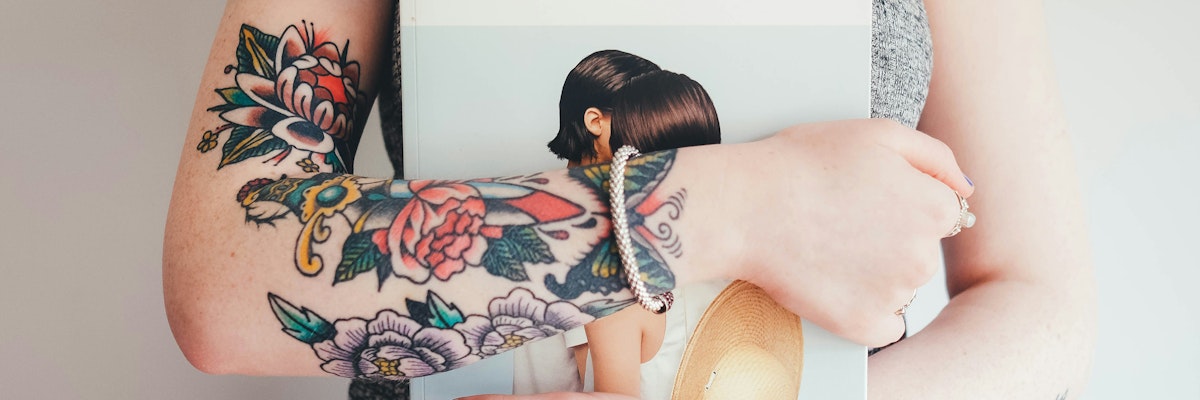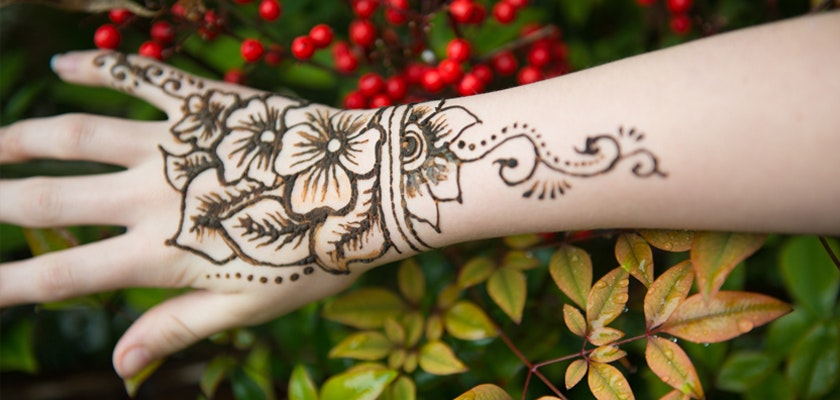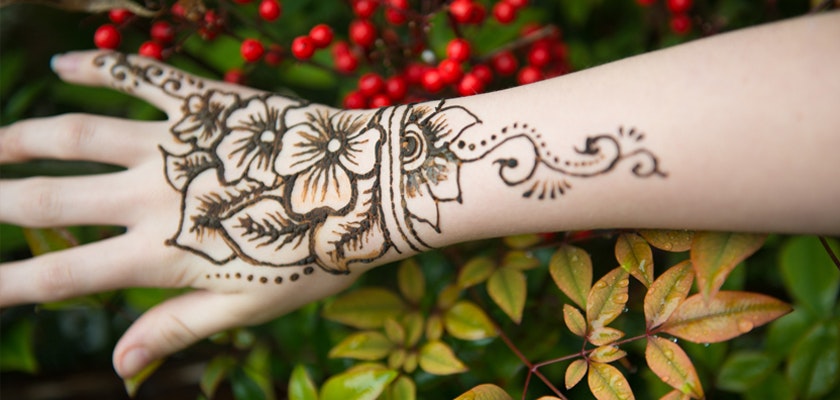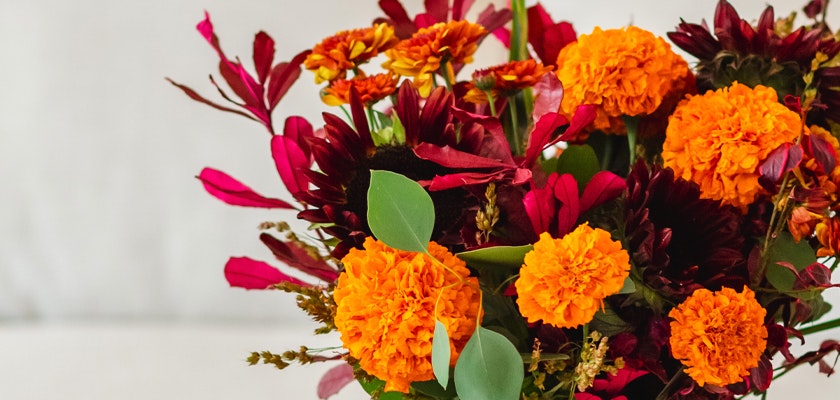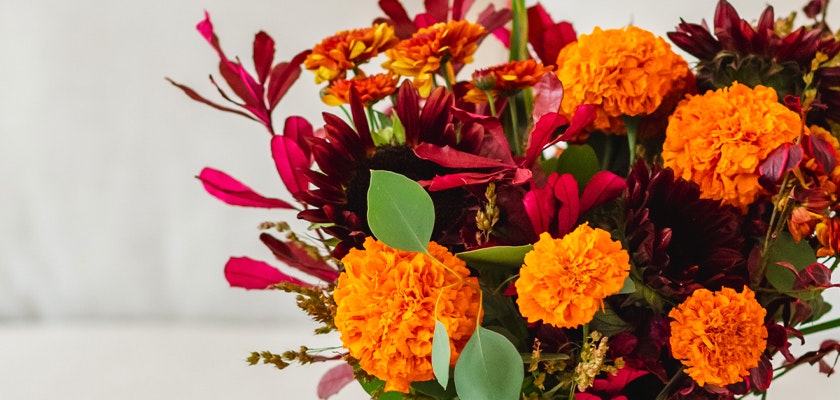Inked Botanicals: Decoding the Symbolism and Significance of Popular Flower Tattoos
The world of tattoos is as diverse as the individuals who wear them. One motif that has persisted through time and across cultures is the flower. Blossoms, with their wide array of shapes, colors, and meanings, offer a rich palette for personal expression.
A Comprehensive Guide of Flower Tattoos and Meanings
This blog post will delve into the captivating realm of flower tattoos, unearthing their historical roots, popular choices, traditional representations, and the symbolism behind each bloom.
Whether you're contemplating your first tattoo or looking to add another to your collection, understanding the underlying symbolism of your chosen design can add depth and personal significance to your body art. Flowers, in particular, carry a multitude of meanings derived from various cultures, traditions, and even individual color variations.
Before we embark on this exploration, let's lay down some groundwork with some handy tips for those considering getting a flower tattoo. Remember, a tattoo is not just an aesthetic choice; it's a lifelong commitment, a piece of art that becomes an integral part of your identity. Therefore, it's essential to approach it with careful thought and preparation.
A Comprehensive Guide of Flower Tattoos and Meanings
This blog post will delve into the captivating realm of flower tattoos, unearthing their historical roots, popular choices, traditional representations, and the symbolism behind each bloom.
Whether you're contemplating your first tattoo or looking to add another to your collection, understanding the underlying symbolism of your chosen design can add depth and personal significance to your body art. Flowers, in particular, carry a multitude of meanings derived from various cultures, traditions, and even individual color variations.
Before we embark on this exploration, let's lay down some groundwork with some handy tips for those considering getting a flower tattoo. Remember, a tattoo is not just an aesthetic choice; it's a lifelong commitment, a piece of art that becomes an integral part of your identity. Therefore, it's essential to approach it with careful thought and preparation.
Guidelines for Blossoming Body Art
Embarking on your tattoo journey can be exciting, but it's crucial to do so with thoughtful preparation. Here are ten important considerations when getting a flower tattoo:
1. Research Thoroughly: Understand the symbolism and cultural context of the flower you're choosing. It should resonate with your personality and life experiences.
2. Find the Right Artist: Look for an artist whose style aligns with your vision. Check their portfolio to ensure they can execute the design you have in mind.
3. Consider the Placement: Think about where on your body you want the tattoo. The location can influence the size, detail, and visibility of your tattoo.
4. Size Matters: A larger flower can accommodate more detail, while a smaller one may require a simpler design.
5. Color Choice: Colors can add meaning to your tattoo. Research color symbolism or consider sticking to black and grey for a timeless look.
6. Ask for a Sketch: Request a preliminary sketch of your design. This allows you to visualize the final outcome and make necessary adjustments.
7. Prepare for Pain: Some body parts are more sensitive than others. Be ready for some discomfort during the tattooing process.
8. Aftercare is Crucial: Follow the aftercare instructions provided by your artist to ensure proper healing and longevity of your tattoo.
9. Be Patient: A good tattoo takes time. Don't rush the process; let your artist take the time they need to create the best work.
10. Make it Personal: Ultimately, your tattoo should reflect you. Whether it's a memory, a belief, or a personal symbol, let your tattoo tell your story.
Inked Petals: Tracing the History of Flower Tattoos
The tradition of adorning the human body with flower tattoos has deep historical roots, transcending cultures and eras. The ancient Egyptians, for instance, used floral symbolism extensively in their art and hieroglyphics, with lotus tattoos signifying creation and rebirth. In Japan, the art of tattooing, or "Irezumi," often features flowers like cherry blossoms and chrysanthemums, representing ephemeral beauty and the cycle of life respectively.
In Western culture, flower tattoos gained popularity during the 18th century, thanks to seafarers who brought back tattoos from their travels. These early tattoos often featured roses, symbolizing love and beauty. As tattooing evolved into an art form in the 20th century, so did the use of floral motifs, with different flowers and colors carrying specific meanings.
Today, flower tattoos are cherished for their aesthetic appeal, versatility, and profound symbolism. They allow the wearer to express personal beliefs, honor loved ones, or commemorate significant life events. From small, delicate designs to bold, intricate pieces, flower tattoos continue to captivate with their timeless charm and significance.
Popular Petals: Top Flower Choices for Tattoos
When it comes to flower tattoos, certain blossoms have won the hearts of tattoo enthusiasts worldwide. Let's explore twenty of the most popular flowers for tattoos and uncover the rich symbolism they carry:
1. Rose: Symbolizes love, passion, and beauty. Different colors carry additional meanings; for instance, a red rose represents romantic love, while a black rose signifies grief or loss.
2. Lotus: A powerful emblem of rebirth, enlightenment, and purity, especially in Eastern cultures. It often symbolizes the journey from hardship to triumph.
3. Lily: Represents purity, femininity, and renewal. Different lily varieties also carry specific meanings, like the calla lily, symbolizing beauty, and the stargazer lily, representing ambition.
4. Cherry Blossom: In Japanese culture, it symbolizes the transient nature of life due to its short blooming cycle. It's a reminder to cherish each moment.
5. Sunflower: Symbolizes adoration, loyalty, and longevity. Its tendency to face the sun is seen as a message of positivity and resilience.
6. Peony: Often associated with wealth, honor, and romance. In tattoo art, it's commonly used to symbolize prosperity and good fortune.
7. Daisy: Represents innocence, purity, and true love. In Victorian times, it was also a symbol of loyalty.
8. Orchid: Symbolizes love, strength, and beauty. Different colors and types of orchids can represent love, strength, luxury, and beauty.
9. Poppy: Often associated with sleep, peace, and remembrance. It's also a symbol of imagination and luxury.
10. Iris: Symbolizes hope, faith, courage, wisdom, and admiration.
11. Tulip: Represents perfect love. Like roses, different colors of tulips have different meanings.
12. Violet: In Victorian times, violets symbolized modesty, spiritual wisdom, and humility.
13. Dandelion: Symbolizes freedom, hope, and the ability to rise above life's challenges.
14. Chrysanthemum: In Japanese culture, the chrysanthemum is a symbol of the emperor and the imperial family, and it represents nobility and longevity.
15. Hibiscus: Represents delicate beauty, unity, and peace. In Japanese culture, hibiscus flowers mean gentle.
16. Marigold: Known for their vibrant orange color, marigolds symbolize passion and creativity.
17. Carnation: Represents love, fascination, and distinction. Carnations can convey a wide range of messages, depending on their color.
18. Lavender: Known for its calming scent, lavender symbolizes purity, silence, and luck. It also represents devotion.
19. Magnolia: Represents dignity, nobility, and perseverance. In the American South, magnolias often symbolize beauty and femininity.
20. Hydrangea: Symbolizes heartfelt emotions, gratitude, and sometimes boastfulness.
Guidelines for Blossoming Body Art
Embarking on your tattoo journey can be exciting, but it's crucial to do so with thoughtful preparation. Here are ten important considerations when getting a flower tattoo:
1. Research Thoroughly: Understand the symbolism and cultural context of the flower you're choosing. It should resonate with your personality and life experiences.
2. Find the Right Artist: Look for an artist whose style aligns with your vision. Check their portfolio to ensure they can execute the design you have in mind.
3. Consider the Placement: Think about where on your body you want the tattoo. The location can influence the size, detail, and visibility of your tattoo.
4. Size Matters: A larger flower can accommodate more detail, while a smaller one may require a simpler design.
5. Color Choice: Colors can add meaning to your tattoo. Research color symbolism or consider sticking to black and grey for a timeless look.
6. Ask for a Sketch: Request a preliminary sketch of your design. This allows you to visualize the final outcome and make necessary adjustments.
7. Prepare for Pain: Some body parts are more sensitive than others. Be ready for some discomfort during the tattooing process.
8. Aftercare is Crucial: Follow the aftercare instructions provided by your artist to ensure proper healing and longevity of your tattoo.
9. Be Patient: A good tattoo takes time. Don't rush the process; let your artist take the time they need to create the best work.
10. Make it Personal: Ultimately, your tattoo should reflect you. Whether it's a memory, a belief, or a personal symbol, let your tattoo tell your story.
Inked Petals: Tracing the History of Flower Tattoos
The tradition of adorning the human body with flower tattoos has deep historical roots, transcending cultures and eras. The ancient Egyptians, for instance, used floral symbolism extensively in their art and hieroglyphics, with lotus tattoos signifying creation and rebirth. In Japan, the art of tattooing, or "Irezumi," often features flowers like cherry blossoms and chrysanthemums, representing ephemeral beauty and the cycle of life respectively.
In Western culture, flower tattoos gained popularity during the 18th century, thanks to seafarers who brought back tattoos from their travels. These early tattoos often featured roses, symbolizing love and beauty. As tattooing evolved into an art form in the 20th century, so did the use of floral motifs, with different flowers and colors carrying specific meanings.
Today, flower tattoos are cherished for their aesthetic appeal, versatility, and profound symbolism. They allow the wearer to express personal beliefs, honor loved ones, or commemorate significant life events. From small, delicate designs to bold, intricate pieces, flower tattoos continue to captivate with their timeless charm and significance.
Popular Petals: Top Flower Choices for Tattoos
When it comes to flower tattoos, certain blossoms have won the hearts of tattoo enthusiasts worldwide. Let's explore twenty of the most popular flowers for tattoos and uncover the rich symbolism they carry:
1. Rose: Symbolizes love, passion, and beauty. Different colors carry additional meanings; for instance, a red rose represents romantic love, while a black rose signifies grief or loss.
2. Lotus: A powerful emblem of rebirth, enlightenment, and purity, especially in Eastern cultures. It often symbolizes the journey from hardship to triumph.
3. Lily: Represents purity, femininity, and renewal. Different lily varieties also carry specific meanings, like the calla lily, symbolizing beauty, and the stargazer lily, representing ambition.
4. Cherry Blossom: In Japanese culture, it symbolizes the transient nature of life due to its short blooming cycle. It's a reminder to cherish each moment.
5. Sunflower: Symbolizes adoration, loyalty, and longevity. Its tendency to face the sun is seen as a message of positivity and resilience.
6. Peony: Often associated with wealth, honor, and romance. In tattoo art, it's commonly used to symbolize prosperity and good fortune.
7. Daisy: Represents innocence, purity, and true love. In Victorian times, it was also a symbol of loyalty.
8. Orchid: Symbolizes love, strength, and beauty. Different colors and types of orchids can represent love, strength, luxury, and beauty.
9. Poppy: Often associated with sleep, peace, and remembrance. It's also a symbol of imagination and luxury.
10. Iris: Symbolizes hope, faith, courage, wisdom, and admiration.
11. Tulip: Represents perfect love. Like roses, different colors of tulips have different meanings.
12. Violet: In Victorian times, violets symbolized modesty, spiritual wisdom, and humility.
13. Dandelion: Symbolizes freedom, hope, and the ability to rise above life's challenges.
14. Chrysanthemum: In Japanese culture, the chrysanthemum is a symbol of the emperor and the imperial family, and it represents nobility and longevity.
15. Hibiscus: Represents delicate beauty, unity, and peace. In Japanese culture, hibiscus flowers mean gentle.
16. Marigold: Known for their vibrant orange color, marigolds symbolize passion and creativity.
17. Carnation: Represents love, fascination, and distinction. Carnations can convey a wide range of messages, depending on their color.
18. Lavender: Known for its calming scent, lavender symbolizes purity, silence, and luck. It also represents devotion.
19. Magnolia: Represents dignity, nobility, and perseverance. In the American South, magnolias often symbolize beauty and femininity.
20. Hydrangea: Symbolizes heartfelt emotions, gratitude, and sometimes boastfulness.
Inked Traditions: Classic Flowers in Traditional Tattoos
Traditional tattoos, also known as "Old School" tattoos, have a distinct aesthetic characterized by bold lines, vibrant colors, and iconic designs. Among these designs, certain flowers have become classic choices due to their striking visuals and symbolic meanings. Let's explore ten such flowers that have left an indelible mark on the world of traditional tattoos:
1. Rose: A timeless choice in traditional tattoos, symbolizing love, beauty, and balance.
2. Chrysanthemum: Often found in Japanese traditional tattoos, representing longevity and rejuvenation.
3. Peony: A popular choice in both Japanese and Western traditional tattoos, symbolizing wealth, honor, and romance.
4. Lily: Represents purity and a restored innocence after death.
5. Poppy: Symbolizes peace, especially after death, and is often used in remembrance.
6. Daisy: Represents innocence and purity.
7. Violet: In traditional tattoos, violets symbolize modesty and simplicity.
8. Iris: Represents hope, faith, and wisdom.
9. Sunflower: Symbolizes adoration, loyalty, and long life.
10. Tulip: Represents perfect love and passion.
Traditional Japanese Tattoos and Their Floral Icons
In the realm of traditional Japanese tattoos, or Irezumi, flowers are more than just decorative elements. They carry deep symbolism and often tell a story or convey a philosophical message. Here are five flowers that frequently feature in these stunning works of body art:
1. Cherry Blossom: Known as "Sakura" in Japan, cherry blossoms symbolize the fleeting nature of life due to their short blooming period.
2. Chrysanthemum: A symbol of the emperor and the imperial family, chrysanthemums represent nobility, longevity, and rejuvenation.
3. Peony: Known as the "King of Flowers" in Japan, peonies symbolize wealth, honor, and high social status.
4. Lotus: Revered for its ability to bloom in murky waters, the lotus represents spiritual awakening and the struggle of life.
5. Plum Blossom: Symbolizes perseverance and hope, as it blooms in the cold of winter, heralding the arrival of spring.
A Rose by Any Other Name: The Significance of Rose Tattoos
Perhaps no other flower has captured the hearts of tattoo enthusiasts quite like the rose. With its elegant petals and thorny stem, a rose tattoo embodies beauty, love, and resilience in the face of adversity. But the symbolism of a rose tattoo can vary significantly based on its color:
1. Red Rose: Symbolizes romantic love, passion, and respect.
2. White Rose: Represents purity, innocence, and spiritual love.
3. Pink Rose: Stands for grace, happiness, and gentle emotions of love.
4. Yellow Rose: Symbolizes friendship, joy, and caring.
5. Black Rose: Often associated with grief, death, or rebellion.
Blossoms of Birth: Flower Tattoos Based on Your Birth Month
A unique idea for a flower tattoo is to choose the flower associated with your birth month. Each month has a specific flower that symbolizes the traits and characteristics of individuals born in that month:
1. January: Carnation - Love, fascination, and distinction.
2. February: Violet - Modesty, spiritual wisdom, and humility.
3. March: Daffodil - New beginnings, prosperity, and luck.
4. April: Daisy - Innocence, purity, and true love.
6. June: Rose - Love, passion, and beauty.
7. July: Larkspur - Positivity, dignity, and an open heart.
8. August: Gladiolus - Strength of character, honor, and conviction.
9. September: Aster - Wisdom, valor, and faith.
10. October: Marigold - Creativity, passion, and the beauty of life.
11. November: Chrysanthemum - Joy, optimism, and love.
12. December: Poinsettia - Celebration, success, and assurance.
Each of these flowers not only adds a personal touch to your tattoo but also connects you with the natural cycle of life and the unique energies of your birth month.
Inked Traditions: Classic Flowers in Traditional Tattoos
Traditional tattoos, also known as "Old School" tattoos, have a distinct aesthetic characterized by bold lines, vibrant colors, and iconic designs. Among these designs, certain flowers have become classic choices due to their striking visuals and symbolic meanings. Let's explore ten such flowers that have left an indelible mark on the world of traditional tattoos:
1. Rose: A timeless choice in traditional tattoos, symbolizing love, beauty, and balance.
2. Chrysanthemum: Often found in Japanese traditional tattoos, representing longevity and rejuvenation.
3. Peony: A popular choice in both Japanese and Western traditional tattoos, symbolizing wealth, honor, and romance.
4. Lily: Represents purity and a restored innocence after death.
5. Poppy: Symbolizes peace, especially after death, and is often used in remembrance.
6. Daisy: Represents innocence and purity.
7. Violet: In traditional tattoos, violets symbolize modesty and simplicity.
8. Iris: Represents hope, faith, and wisdom.
9. Sunflower: Symbolizes adoration, loyalty, and long life.
10. Tulip: Represents perfect love and passion.
Traditional Japanese Tattoos and Their Floral Icons
In the realm of traditional Japanese tattoos, or Irezumi, flowers are more than just decorative elements. They carry deep symbolism and often tell a story or convey a philosophical message. Here are five flowers that frequently feature in these stunning works of body art:
1. Cherry Blossom: Known as "Sakura" in Japan, cherry blossoms symbolize the fleeting nature of life due to their short blooming period.
2. Chrysanthemum: A symbol of the emperor and the imperial family, chrysanthemums represent nobility, longevity, and rejuvenation.
3. Peony: Known as the "King of Flowers" in Japan, peonies symbolize wealth, honor, and high social status.
4. Lotus: Revered for its ability to bloom in murky waters, the lotus represents spiritual awakening and the struggle of life.
5. Plum Blossom: Symbolizes perseverance and hope, as it blooms in the cold of winter, heralding the arrival of spring.
A Rose by Any Other Name: The Significance of Rose Tattoos
Perhaps no other flower has captured the hearts of tattoo enthusiasts quite like the rose. With its elegant petals and thorny stem, a rose tattoo embodies beauty, love, and resilience in the face of adversity. But the symbolism of a rose tattoo can vary significantly based on its color:
1. Red Rose: Symbolizes romantic love, passion, and respect.
2. White Rose: Represents purity, innocence, and spiritual love.
3. Pink Rose: Stands for grace, happiness, and gentle emotions of love.
4. Yellow Rose: Symbolizes friendship, joy, and caring.
5. Black Rose: Often associated with grief, death, or rebellion.
Blossoms of Birth: Flower Tattoos Based on Your Birth Month
A unique idea for a flower tattoo is to choose the flower associated with your birth month. Each month has a specific flower that symbolizes the traits and characteristics of individuals born in that month:
1. January: Carnation - Love, fascination, and distinction.
2. February: Violet - Modesty, spiritual wisdom, and humility.
3. March: Daffodil - New beginnings, prosperity, and luck.
4. April: Daisy - Innocence, purity, and true love.
6. June: Rose - Love, passion, and beauty.
7. July: Larkspur - Positivity, dignity, and an open heart.
8. August: Gladiolus - Strength of character, honor, and conviction.
9. September: Aster - Wisdom, valor, and faith.
10. October: Marigold - Creativity, passion, and the beauty of life.
11. November: Chrysanthemum - Joy, optimism, and love.
12. December: Poinsettia - Celebration, success, and assurance.
Each of these flowers not only adds a personal touch to your tattoo but also connects you with the natural cycle of life and the unique energies of your birth month.
Blossoms and Bouquets, Tattoos and Transcendence
Flower tattoos, with their versatility, aesthetic appeal, and profound symbolism, offer countless possibilities for personal expression. Whether it's a rose symbolizing love, a lotus embodying rebirth, or a birth flower representing your unique traits, each tattoo is a personal narrative inked in vibrant hues and intricate designs.
Blossoms and Bouquets, Tattoos and Transcendence
Flower tattoos, with their versatility, aesthetic appeal, and profound symbolism, offer countless possibilities for personal expression. Whether it's a rose symbolizing love, a lotus embodying rebirth, or a birth flower representing your unique traits, each tattoo is a personal narrative inked in vibrant hues and intricate designs.
And while tattoos offer a permanent way to carry these beautiful blooms with you, there's another, less permanent way to enjoy their beauty and symbolism - through bouquets and plants from BloomsyBox. Our home delivered flowers meticulously curated bouquets bring together an array of exotic flowers, each carrying its unique symbolism, ready to add color, fragrance, and positive energy to your special occasions. Whether it's a celebration, a tribute, or simply a desire to bring the outdoors in, BloomsyBox is here to fill your spaces with the fresh, vibrant energy of blossoming flowers.
And while tattoos offer a permanent way to carry these beautiful blooms with you, there's another, less permanent way to enjoy their beauty and symbolism - through bouquets and plants from BloomsyBox. Our home delivered flowers meticulously curated bouquets bring together an array of exotic flowers, each carrying its unique symbolism, ready to add color, fragrance, and positive energy to your special occasions. Whether it's a celebration, a tribute, or simply a desire to bring the outdoors in, BloomsyBox is here to fill your spaces with the fresh, vibrant energy of blossoming flowers.
